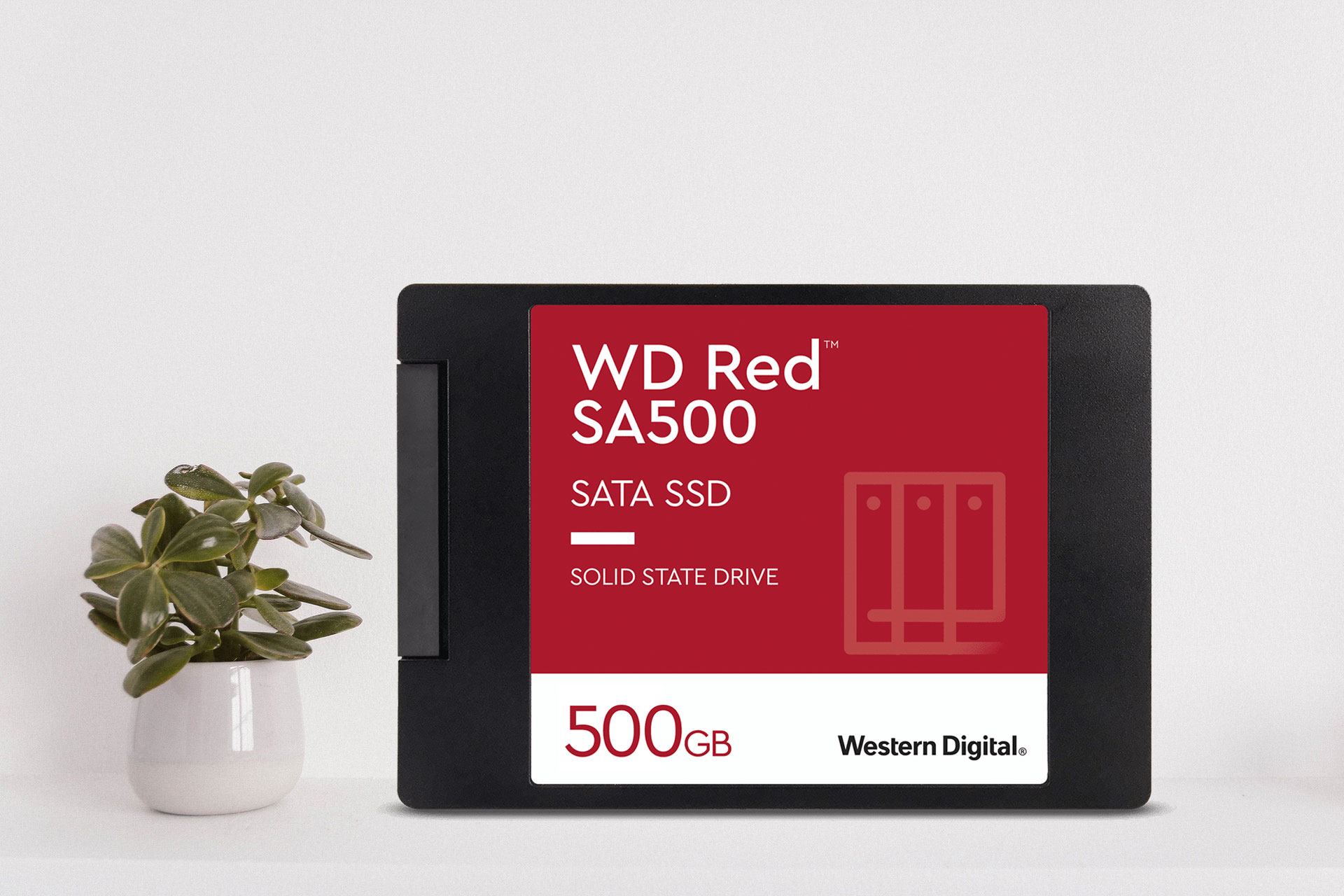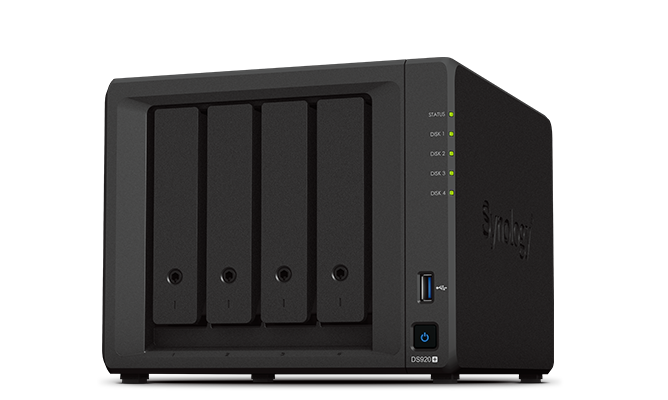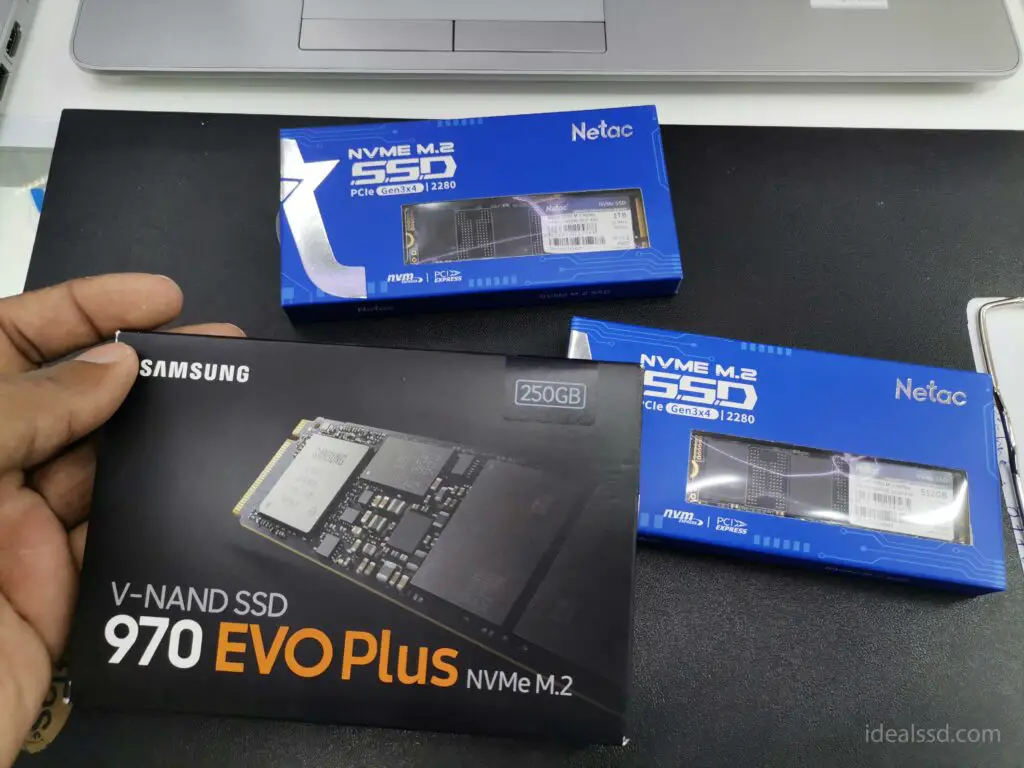What is a NAS SSD and Why Should You Care?

If you are looking for a way to improve the performance of your NAS device, then you should consider investing in a NAS SSD. In this article, I will discuss the benefits of using a NAS SSD and explain why you should care about them.
In summary, A NAS SSD is a type of solid-state drive that is specifically designed to work with network-attached storage (NAS) devices. These NAS SSDs offer many benefits over traditional SSD drives, including increased performance and reliability.
If you are looking for a NAS HDD, The most recommended one is WD Red Pro NAS (Check on Amazon), which goes up to 22TB. Their 22TB capacity drive comes with 7200 RPM, SATA 6 Gb/s, CMR, and 512 MB Cache.
Or, for an NVME SSD NAS, go for WD Red SN700, which goes up to 4TB. For SATA SSD NAS, go for WD Red SA500, which also goes up to 4TB capacity.
What Is a NAS (Network Attached Storage)

A network-attached storage device is a server connected to a computer network and allows users to store and share data. NAS devices are often used in business environments to store large amounts of data, including emails, documents, and images.
NAS devices can be purchased pre-configured or built from scratch using components such as hard drives, RAID controllers, and network cards. One of the benefits of using a NAS device is that it can be accessed by multiple users simultaneously. Another benefit is that NAS devices often have additional data backup and security features.
There are several differences between a NAS and a standard computer. The NAS remains ON even when you switch off your desktop or close your laptop. An ‘average’ hard drive is unsuitable for this level of use and does not last very long. For this reason, specialized NAS drives are designed specifically for 24/7 use. In RAID configurations, these NAS drives perform better and last longer.
I personally recommend Asustor Lockerstor 4 Gen2 AS6704T (Check on Amazon) as a NAS device. In my office, we are using this device, and I can confidently say that the Lockerstor 4 Gen2 is one of the best options on the market today. The first thing that struck me about this device was its sleek and modern design, which would look great in any home or office setting. CPU is Intel Celeron N5105 Quad-Core 2.0GHz, and there are 4 M.2 NVMe Slots. Sure, there are other budget-friendly options out there. But I am just sharing my experience with you and really recommending this device.
8 Benefits of Using NAS
1) Increased Storage Space
When an organization stores data on network-attached storage (NAS) device, the space is pooled together so that one only uses the amount of space one needs. This way, critical data is always available and accessible, but less space is used overall, which can be important for data-hungry users.
In addition, storing data on a NAS can improve performance because users are accessing a dedicated storage device rather than sending requests across the network to a server that may be handling other tasks. By using a NAS, organizations can realize many benefits, including improved performance and more efficient use of storage space.
2) Redundancy
One of the most important considerations for any business is data protection. In the event of a power outage, hardware failure, or other disasters, data loss can devastate operations. As a result, many businesses choose to use Network Attached Storage (NAS) systems to store their critical data.
NAS systems offer many benefits, including increased reliability and easier maintenance. Most NAS systems come with built-in redundancy features, such as RAID, which help to protect data in the event of a drive failure. By using NAS systems with built-in redundancy features, businesses can reduce the risk of data loss and ensure that their operations can continue during an unexpected outage.
3) Ease of use
NAS systems are designed to be easy to use, even for users who are not tech-savvy. They can be quickly installed and configured without the need for specialized training or knowledge. This makes them an ideal solution for small businesses that don’t have IT staff on hand to manage complex storage systems.
NAS systems are also scalable, so they can grow as a business expands. And because they use standard Ethernet networking, they can be easily integrated into an existing network infrastructure. As a result, NAS systems offer a cost-effective and flexible storage solution for small businesses.
4) Scalability
As business needs grow, NAS systems can easily expand to accommodate more data. This makes them a flexible and scalable solution for businesses of all sizes.
5) Remote Access
With NAS systems, employees can access stored data from anywhere in the world as long as they have an internet connection. This makes it easy for businesses to allow employees to work remotely or from different locations.
6) Improved Security
NAS systems offer several features that can help to improve security. One of the most important is password protection, ensuring only authorized users can access the data. Another important feature is encrypted data transfers, which help to prevent data from being intercepted and read by unauthorized individuals.
In addition, NAS systems typically include several other security features, such as event logging and access control lists. These features provide an additional layer of protection against unauthorized access and help to ensure that stored data remains safe and secure.
7) Automatic Data Backup
Data backup is critical for the continuity of business or institution, especially in the event of catastrophic HDD failure. To mitigate the risk of losing important data, it’s essential to have a backup strategy in place that will automatically save copies of updated documents and files. A NAS (Network Attached Storage) device is an ideal solution for small businesses or individual users who want to set up scheduled backups.
Should You Use SSD or HDD in NAS?
Network-attached storage, or NAS, is a great way to increase the storage capacity of your home or office network. Many NAS devices come with one or more hard disk drives (HDDs), but solid state drives (SSDs) are also becoming an increasingly popular option.
SSDs offer several advantages over HDDs, including better energy efficiency, faster data transfers, and lower noise levels. However, the biggest benefit of SSDs for NAS users is the increased speed that they can provide.
How much speed you gain depends on your network because the data has to travel from the SSD to your router (or switch) and then to your computer. If you have a fast network ( Gigabit Ethernet or higher), you’ll see a significant speed increase when using an SSD. If you have a slower network (100Mbps or lower), the speed increase will be less noticeable,
but even with a relatively slow connection, an SSD-equipped NAS can deliver significantly faster performance than an HDD-based device. If you’re looking for your NAS’s best performance, SSDs are worth considering.
Can I Mix SSD and HDD in NAS?
It’s an absolute Yes. However, I would recommend avoiding any traditional RAID configuration when doing so. The reason for this is If you have both SSD and HDD drives in your NAS and configure them as a traditional RAID array (e.g. RAID 0, 1 or 5), the speed of the entire array will be limited by the slower of the two drives. In other words, you won’t be able to take advantage of the faster speed of the SSD drive because the HDD drive will drag it down.
However, it’s another topic of discussion which RAID config would be best for you if you have both SSD and HDD drives?
The Usage of SSDs in NAS
The use of SSD in NAS can be classified into three:
1) Using SSD as Cache Memory:
This is the most popular and effective way of using SSD in a NAS. In this configuration, the traditional HDD drives are used as the primary storage for data while the SSD drives are used as a read/write cache. When data is accessed from the HDD array, it is first copied over to the SSD cache and then read from there.
This speeds up access times because reading from an SSD is much faster than reading from an HDD. Similarly, when data is written to the HDD array, it is first written to the SSD cache and then flushed to the HDDs. This speeds up write times because writing to an SSD is much faster than writing to an HDD.
2) Using SSD as Primary Storage:
In this configuration, the SSD drives are used as the primary storage. This setup is not as popular because it is more expensive. But if you have the budget and are willing to put in the extra effort, this can be a very fast and effective way to use a NAS.
3) Use The SSD as System Drive For The NAS:
This is the most simple way of using SSD in a NAS. In this configuration, you simply use an SSD drive as the system drive for the NAS. This will make the overall system faster because the operating system and other system files will be stored on the faster SSD drive. However, this does not do anything to speed up access to data stored on the NAS because that data will still be stored on slower HDD drives.
Are SSDs in NAS a Good Idea?
When a Network Attached Storage (NAS) device is writing to disk, how Solid State Drives (SSDs) and Hard Disk Drives (HDDs) operate can be quite different from one another – especially when RAID environments are taken into account along with the Garbage Collection needs of an SSD.
For this reason, it’s usually advisable to opt for an Enterprise SSD rather than a consumer-grade SSD when setting up a NAS system. Enterprise SSDs are specifically designed to function well in multi-user environments and offer greater reliability and higher write endurance than their consumer-grade counterparts.
According to my experience, The speed of a NAS device is limited by several factors, but the most significant factor is typically the network connectivity. While the drives themselves can transfer data at high speeds, the network interface is often the bottleneck.
In most cases, most of the speed is hindered not by the drives but by the network. This is because NAS devices typically rely on network connectivity for both reading and writing data. As a result, if the network is slow or congested, it can significantly impact the speed of the NAS device.
The network stack is at the heart of a NAS device’s performance, which regulates how data is read from and written to the drives. The network stack is responsible for ensuring that data is transferred quickly and efficiently, and it can greatly impact a NAS device’s overall performance. The network stack can also be affected by the way in which the host OS reads and writes from the drives themselves.
This means the system might be unable to use an SSD effectively for storage capacity. Some systems, like Synology, use an SSD’s improved read/write speed as a caching tier.
So I would suggest you use an enterprise-level NAS SSD in a NAS device as a caching tier.
NAS SSD vs Regular SSD
There are several key differences between a NAS SSD and a regular SSD.
- First, NAS SSDs are specifically designed for use in network-attached storage devices. This means that they have enhanced reliability and compatibility features.
- Second, NAS SSDs often have a higher capacity than regular SSDs. This is because NAS devices typically require more storage space.
- Third, NAS SSDs typically have higher data transfer speeds than regular SSDs. This is because NAS devices require faster data access to function properly.
- Fourth, NAS SSDs typically have more robust error correction capabilities than regular SSDs. This is necessary to maintain data integrity in a networked environment.
- Finally, NAS SSDs often have special features such as encryption and remote management capabilities. These features are designed to make deploying and managing a NAS system easier.
Can I Use a Regular SSD for NAS?

When it comes to building a NAS, one of the most important decisions is choosing the right type of SSD. A regular SSD will definitely get the job done, but an enterprise-level NAS SSD will always outperform the regular SSD.
This is because enterprise-level NAS SSDs are specifically designed for use in a NAS environment. They offer higher throughput, lower latency, and more consistent performance. In addition, they are more resistant to data loss and corruption.
As a result, they can provide superior performance and reliability. If you’re serious about building a high-performance NAS, then enterprise-level NAS SSDs are the way to go. Go to the top of this page. I recommended some NAS SSDs for you.

